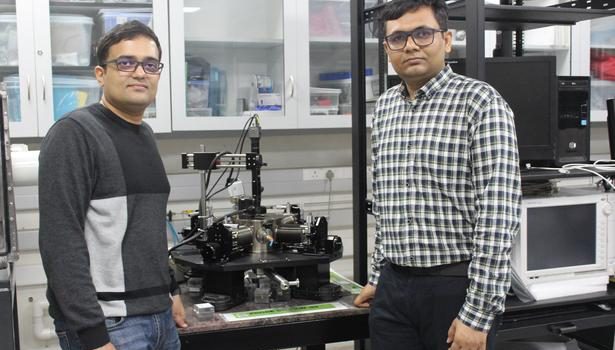Artificial Intelligence and machine learning can cause a veritable revolution in the working of the world today, yet their development is hindered by the fact that the present state of the art in electronics does not match up to what is needed.
In a move towards developing devices that can mimic the workings of neurons in the brain, researchers from Indian Institute of Science, Bengaluru (IISc), have designed neuromorphic devices using organic materials that have not been used hitherto. Their work since 2014 aimed towards this.
Organic materials had been considered the poorest of different material types in making computing components because they were fragile and unstable. “We chose this genre as our horse for the race because we believed that if there was a way to resolve these performance issues, the functionalities we could extract out of these materials could blew anything else that exists,” says Sreetosh Goswami from the Centre for Nanoscience and Engineering (CeNSE), IISc.
He and his collaborators have published significant papers in this field since 2017 in Nature Materials, Nature Nanotechnology, Advanced Materials and Nature, establishing that organic materials can compute reliably and, in some aspects, are even better than inorganic materials. “The molecular system (transition metal complexes of azo aromatic ligands) is a brainchild of my father, Prof. Sreebrata Goswami,” says Dr. Sreetosh Goswami in an email to The Hindu.
The plastic brain
The human brain which inspired the researchers in their work, in the words of Sreebrata Goswami, who is now with CeNSE, IISc, “vastly outperforms any artificial electronic analogues in terms of its learning, cognition and decision-making ability.” Its remarkable performance uses up just 20 watt of power over a space of 1260 cc. Some of the properties that it exhibits which are desirable include interconnectedness and reconfigurability.
“The neurons in the brain operate on the verge of chaos with a highly non-linear feedback mechanism. We are in search of materials that can capture such properties, an elusive goal…” explains Prof. Sreebrata Goswami.
Many functionalities
Molecular materials are characterised by interactions between molecules and ions, which then present a multi-dimensional landscape of parameter space that can be tinkered with to develop suitable functionalities. The question they asked in a recent paper published in Advanced Materials was whether they could manipulate these many-body interactions to achieve plasticity and reconfigurability in the devices. They did this by measuring the current-voltage curves as a function of temperature over a wide range. They could capture functionalities spanning bipolar, unipolar, non-volatile, and volatile memristors.
In Dr. Sreetosh Goswami’s words, this is an “insane amount of variability,” to describe which, the group had to design a mathematical space that could enable almost all possible characteristic variations desirable in neuromorphic devices. “The same device could be operated both in analog and digital regime just by tuning the activation energy,” says Dr. Sreetosh Goswami.
Making it work
The challenge was that during low-temperature measurements, in molecular memristors, the switching responses quenched, or flattened out as temperature was lowered. “We could make it work because our molecular devices are robust, and the switching mechanisms have a thermodynamic component that still occurs even when the device is cooled,” says Santi Prasad Rath, who is a Post-Doc at CeNSE, IISc, and the first author of the paper published in Advanced Materials.
Dr. Sreetosh Goswami says, “We are fairly confident that we will be able to develop a functional neuromorphic platform based on our metal complexes which could be world’s first molecular neuromorphic technology.”








Gloss